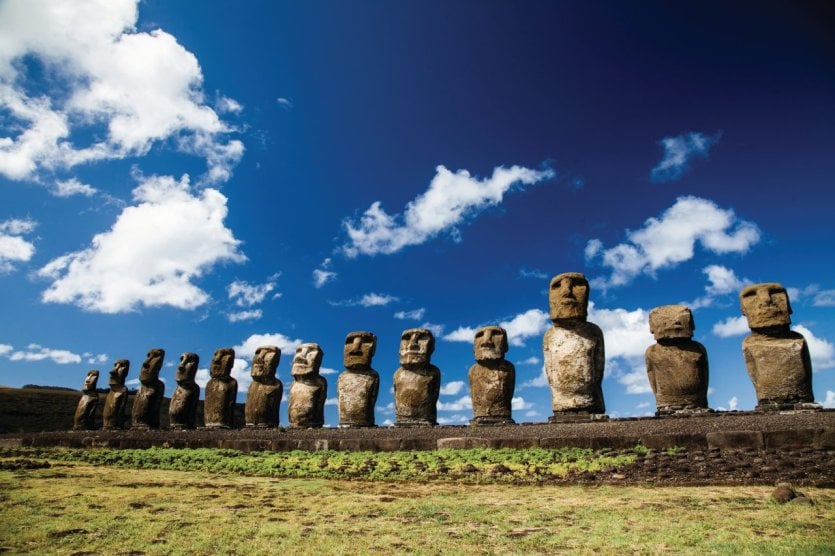
Describing Chile 's landscapes is far from an easy task, as nature seems to have been so generous with this South American tongue of land. With its lunar-like deserts, snow-capped volcanoes and peaceful lakes, it's hardly surprising that the country has become a popular destination for tourists from all over the world in recent years. Chileans make a point of preserving the wonderful flora and fauna that thrive in this inhospitable climate. And how could we fail to mention the mysterious and fascinating Easter Island, a jewel of humanity? This small country conceals many wonders!
1. San Pedro de Atacama
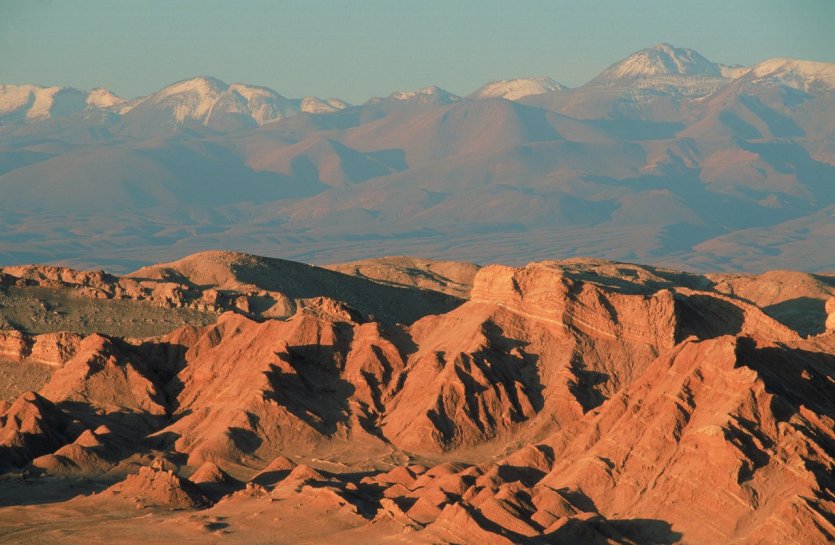
The town of San Pedro de Atacama has a population of 5,600 and is a major tourist attraction. The reasons for this success are simple: the region is simply magnificent! The town's narrow streets, first inhabited by the Atacaméans, then by the Incas and finally by the Spanish, are steeped in history. The town's main source of income is tourism, and hotels are springing up all the time, while the more modest populations who make their living from agriculture sometimes suffer from this invasion of "gringos". The town, set in the Atacama Desert, offers exceptional hiking and trekking opportunities to discover petroglyphs, volcanoes such as Licancabur, and exotic animals such as pink flamingos. In fact, the desert is one of our picks for unrealistic landscapes that seem to come from another world...
Go stargazing in the Atacama Desert, one of the best places in the world to observe the night sky, on this guided tour on this guided tour departing from San Pedro de Atacama.
2. What to do in Chile See Magellanic penguins
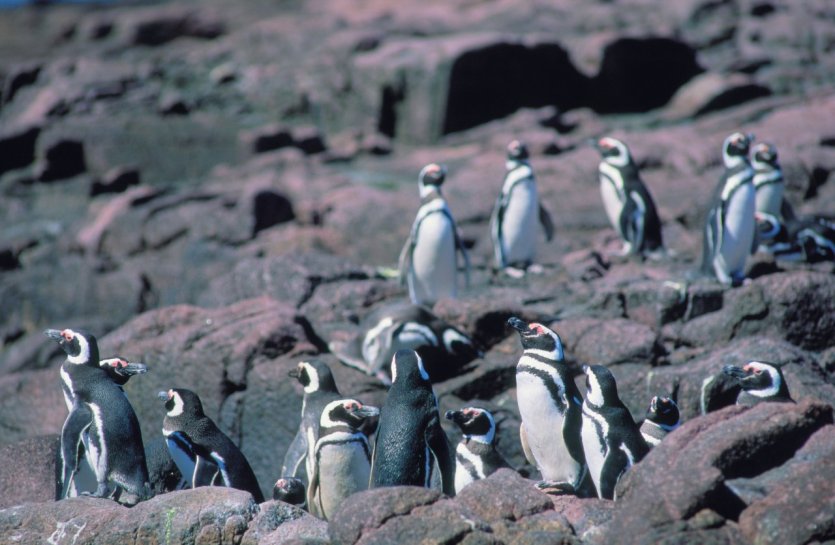
In the hope of catching a glimpse of these strange birds, head for the Strait of Magellan, on Magdalena Island, north of Punta Arenas. the island is home to 60,000 Magellanic penguins, which visitors can admire in the protected Los Pingüinos natural monument. From October to March, tourists take a boat to the island to discover its lighthouse and its unusual inhabitants: the largest penguin colony in southern Chile! Click here to book your Magdalena Island penguin boat tour.
3. Chile's capital, Santiago
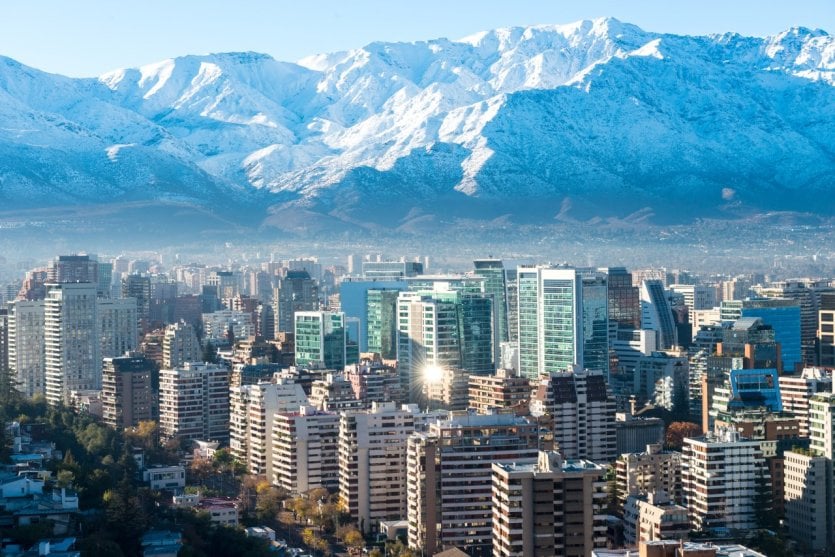
Founded by the conquistador Pedro de Valdivia in 1541, Santiago de Chile is a city with a special charm that has benefited from a real facelift in recent years. With its 6.5 million inhabitants, Chile's capital, located in the center of this long country, is an almost obligatory stopover. Its historic quarters, market, pre-Columbian museum and rolling hills are just some of the features that will make you appreciate Santiago. In the surrounding area, visitors can quickly reach the Andes mountain range and its glaciers or quality vineyards. With its Latin and Western influences, Santiago is an essential stop-off point for getting to know the country.
4. What to do in Chile Taste a rich and varied cuisine

Chilean cuisine is a blend of many cultures, giving it its distinctive flavors. Dishes are often based on corn, the king of cereals in South America. Among the must-tries of this gastronomy are empanadas, small stuffed turnovers, the pastel de chocloa corn gratin with beef or chicken, and steak a lo pobre, a horse steak drowned in a generous onion sauce. For fish lovers, don't panic: ceviche, raw fish marinated in lemon juice, is easy to find, especially in restaurants on Sunday mornings. It is said to have healing powers against hangovers!
Also try alfajores, a typical Latin American pastry consisting of two cookies brought together by a layer of fruit, dulce de leche or chocolate and wrapped in icing. They're one of the world's must-try desserts!
5. El Tatio geysers
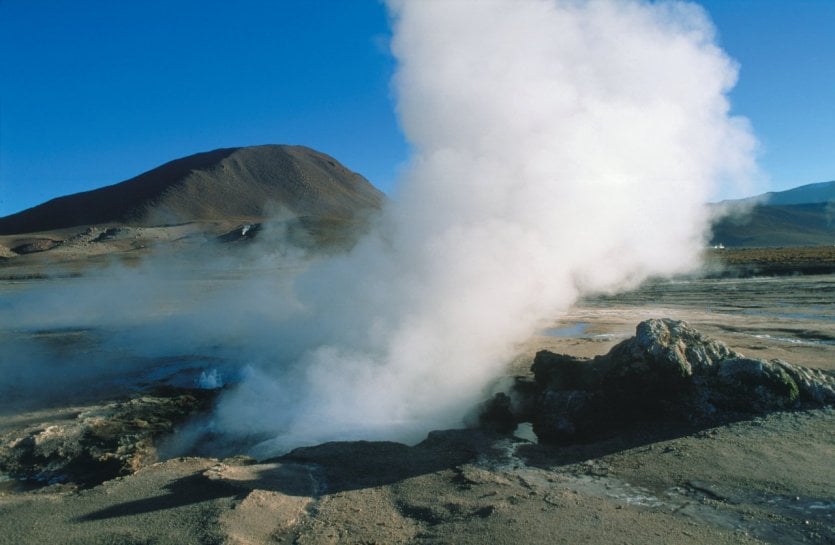
Every morning, the geysers of the El Tatio volcano spew impressive jets of steam. The result of the encounter between volcanic magma and a frozen underground lake, this chemical reaction is absolutely magnificent. Don't get too close to this indomitable force of nature! This geothermal field makes the ground tremble beneath the feet of stunned tourists. At an altitude of 4,280 m, some 80 geysers shoot steam 6 metres into the air. A highly recommended experience that you can book right here!
6. What to do in Chile Walk in the Valley of the Moon
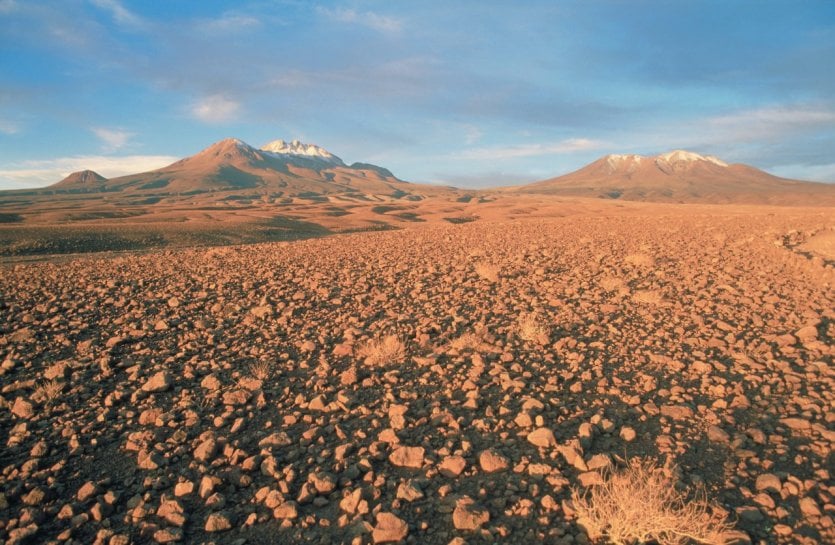
The Valley of the Moon, as its name suggests, is a geological formation with the appearance of a lunar desert. This work of nature is the result of millennia of erosion; rain and wind have meticulously sculpted the ochre-colored dunes and ridges. The brittle clay pylons testify to the fragility of this natural wonder. With your feet in the fine sand, amidst the fairy chimneys, you can enjoy a moment of tranquillity in the midst of extraordinary nature. If you haven't walked on the moon, you'll have walked through its earthly valley. Click here to book your guided tour of the Valley of the Moon!
7. Churches of Chiloé
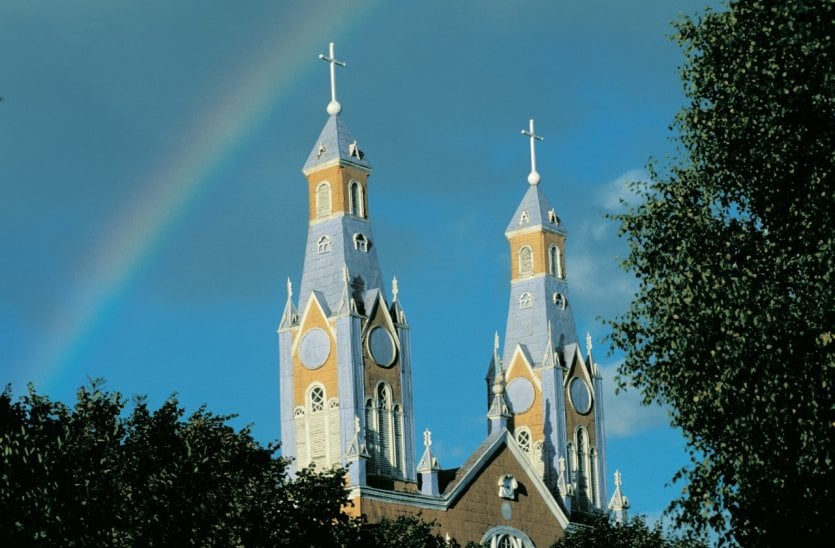
Chiloé is a region with a strong indigenous culture. The hundred or so churches and chapels of Chiloé form one of the most unique architectural ensembles in Chile. Sixteen of them have been listed as part of the world's cultural heritage for over 15 years. The oldest religious monument dates back to 1740, and all subsequent buildings have retained the same architectural style. Only the ornamentation varies from one church to the next. Chiloé's churches are unique in that they are all built of wood.
Tempted? This day trip to the island of Chiloé will take you to the famous stilt houses on the water's edge, as well as the towns of Chacao, Castro and Dalcahue.
8. What to do in Chile Visit Valparaiso, cultural capital
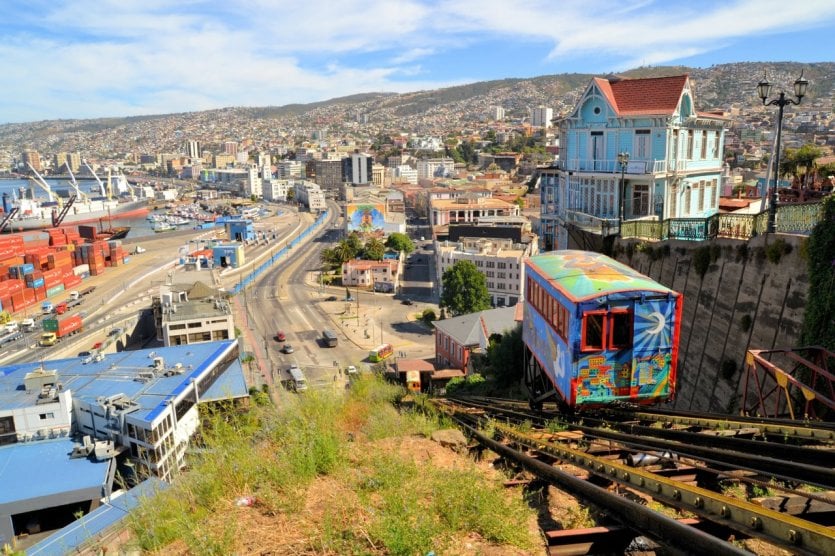
Valparaiso, nicknamed the "Pearl of the Pacific", is a port city steeped in history. Its historic center has been a UNESCO World Heritage Site since 2003. Home to some 300,000 inhabitants, the city continues to attract visitors eager to discover its mysteries. Distinctive for its rattling elevators and endless alleyways overlooking the port and bay, the city is a veritable myth for sailors from all over the world, who used to stop here after crossing the storms of the Strait of Magellan. Its architecture is currently being modernized, with the aim of bringing housing closer to the ocean.
This guided tour will take you to Viña del Mar, with its beautiful beaches and gardens, and Valparaiso, with its colorful houses and graffiti.
9. What to do in Chile Admire the flora and fauna of Torres del Paine
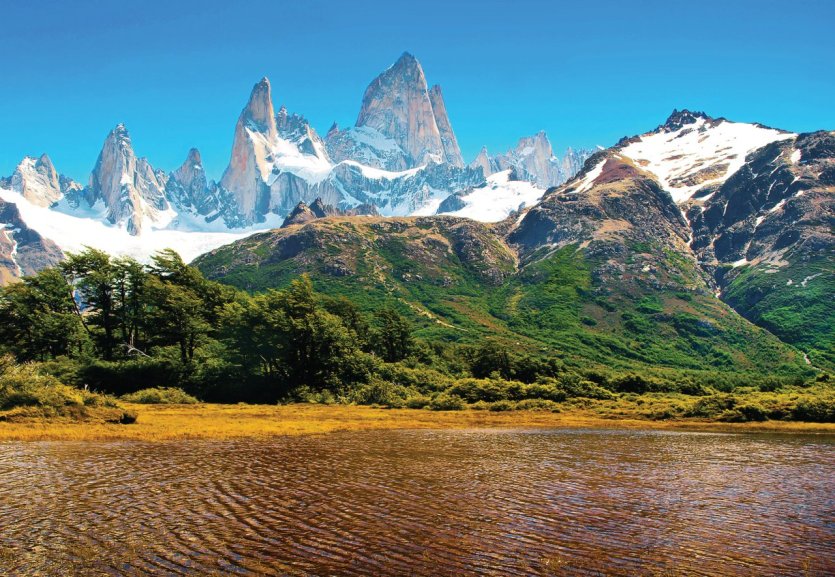
Declared a Biosphere Reserve by UNESCO, the Torres del Paine National Park takes its name from the Torres, three vertiginous rocky peaks emblematic of the park. Its surface area covers 227,298 ha between Patagonia's southern ice field and the Patagonian steppe. Its glaciers are impressive in their sheer size, particularly the famous Grey Glacier, 6 metres long and with icebergs up to 30 metres high. It's not uncommon to come across guanacos, cousins of the llama, and many other species. Many travel to Torres del Paine National Park to fish or admire the magnificent flora, often threatened by man. Click here to book your guided day trip to Torres del Paine
10. Easter Island and its moai

AUNESCO World Heritage Site, Easter Island is both mysterious and fascinating! Its exceptional location has earned it the nickname "the world's navel". This island in the Pacific Ocean is one of the most isolated in the world, since the nearest island, Pitcairn, is 1,900 km away. Yet it is visited by many every year, and its famous monoliths are a must-see tourist attraction. The island, whose official name is actually "Rapa Nui", is populated by several hundred man-made stone giants. These 4-metre-high rocks, extracted from the Rano Raraku volcano, are called "moai", and represent angular faces. But the island still hides many treasures, rock paintings and other archaeological treasures not to be missed, which you can discover by booking this guided day tour of Easter Island .
11. aconcagua Valley, on the Chilean wine route
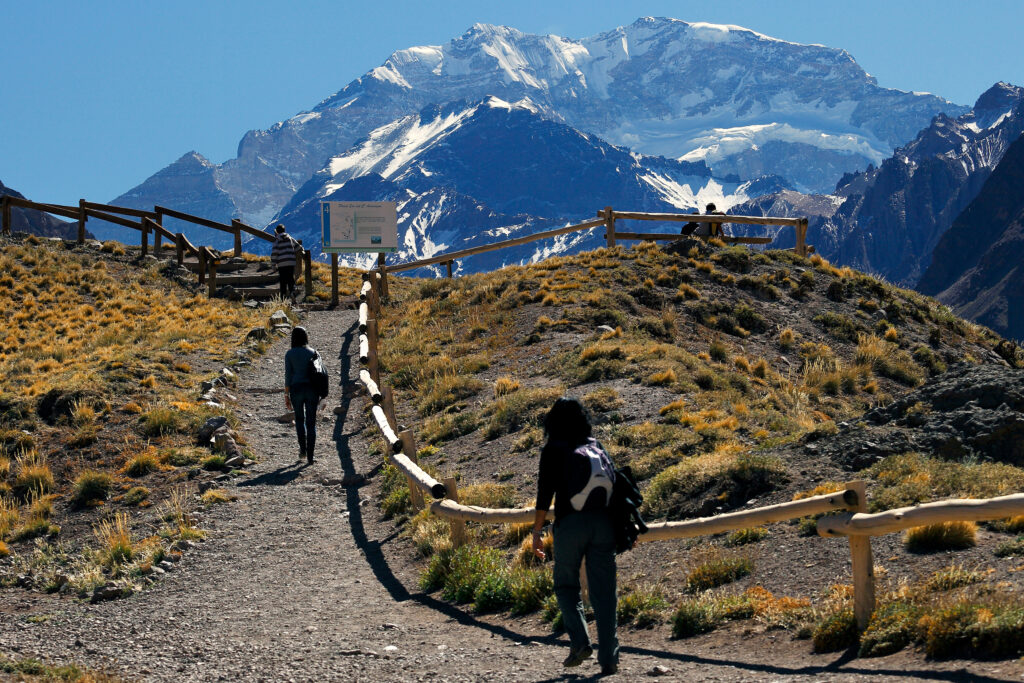
Chile is one of the world's top wine-producing destinations, and not for nothing! With its cold, wet winters, hot, dry summers and breezes straight from the Pacific, the Aconcagua Valley, north of Santiago de Chile, is a prime wine-producing area. In 1854, Maximiano Errázuriz imported French vines and founded his own winery. Today, his estate producesworld-renowned , award-winninggrands crus . Now's your chance to taste some delicious nectars in the heart of the Andes!
12. What to do in Chile Safari in Lauca National Park
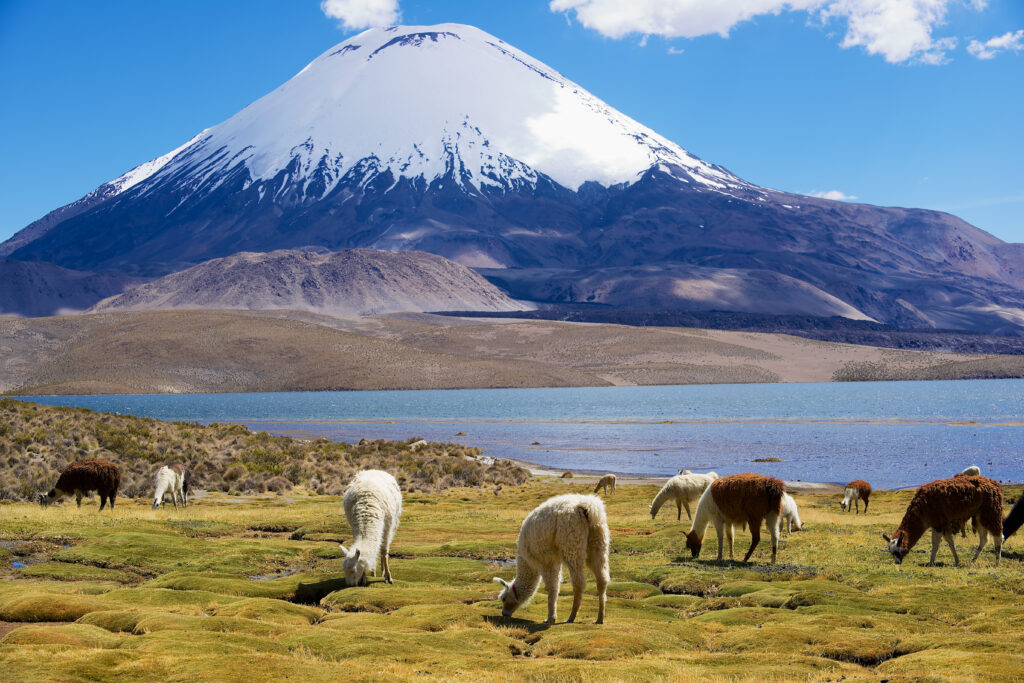
Classified as a biosphere reserve by UNESCO, Lauca National Park is one of the best places to go on safari in South America. Whether by car or on foot during a trek, the area is a compendium of beauty that promises to blow visitors away. We love taking the time to admire the landscapes of high peaks and snow-capped volcanoes. Not forgetting the Altiplano lakes, which also offer a memorable spectacle. As for the animals, you'll see foxes, llamas, pumas, vicuñas, rheas and Andean condors. Here's a tip for wildlife-watching: get up early in the morning!
13. Bernardo O'Higgins Park
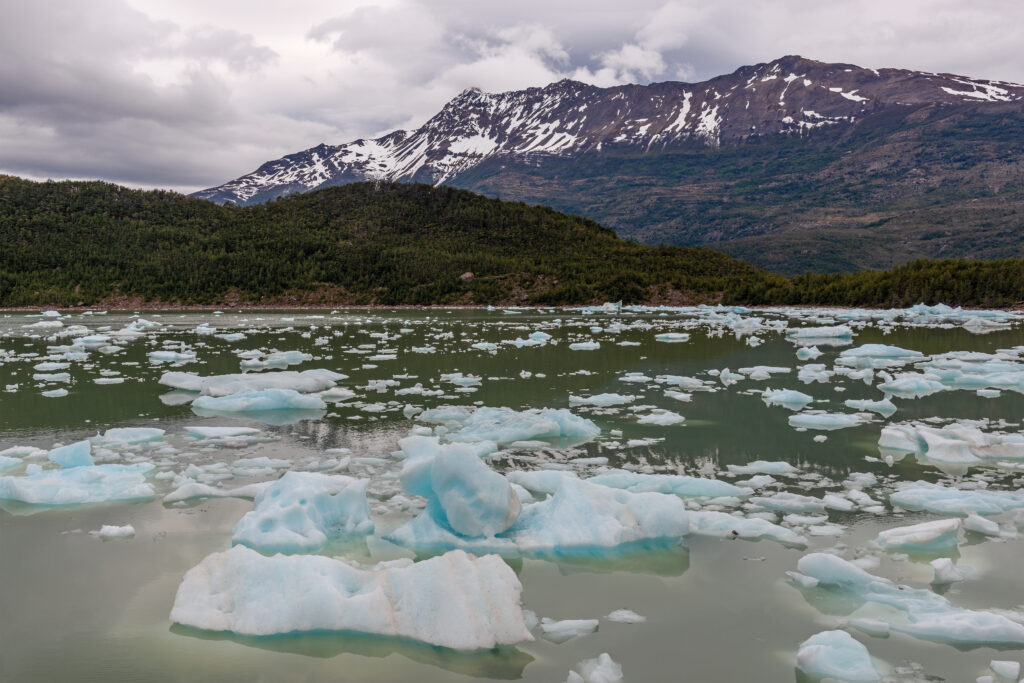
Created in 1969, this is Chile's largest national park. It boasts large areas of glaciers, including the Campo de Hielo Dr. Juan Bruggen and the Campo de Hielo Patagónico. The park can be reached by boat from Puerto Natales on the Ultima Esperanza channel. Along the way, you can admire the Balmaceda and Serrano glaciers, and you can disembark and go as far as the lagoon to observe the floating blocks of ice detached from the Serrano glacier. An opportunity to enjoy nature in its raw state, far from the noise of civilization.
14. Admire the waterfalls of Siete Tazas Park
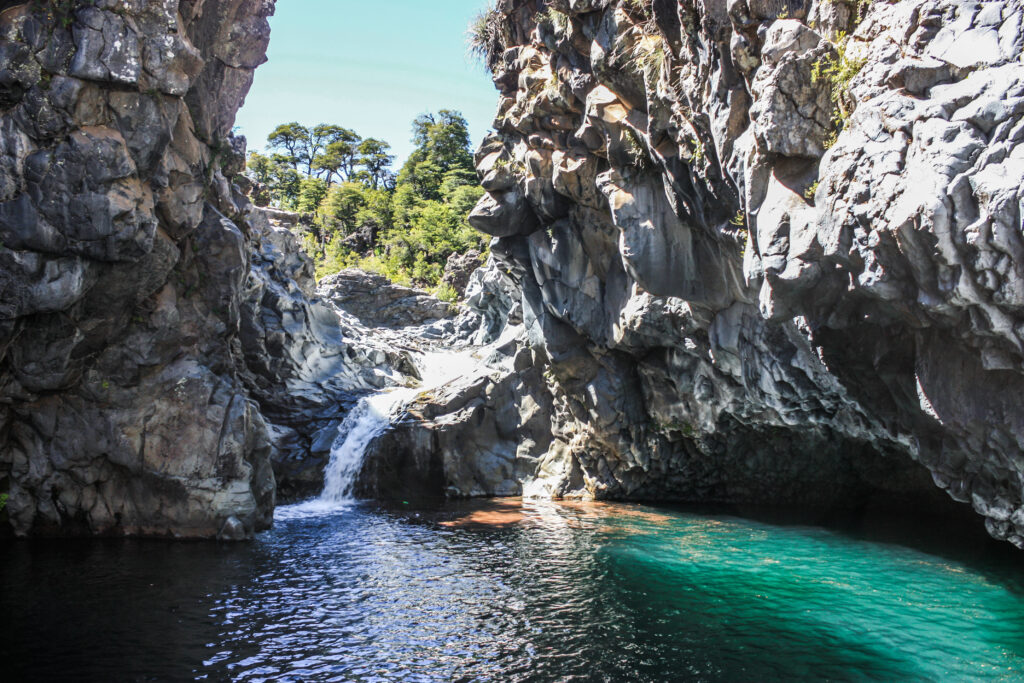
Magnificent landscapes and few visitors yet, even if the Siete Tazas are starting to become well known among travelers. This park is a privileged natural setting where you can see the remains of ancient nomadic hunter-gatherer tribes (such as the stones used to grind food), as well as waterfalls, over 50 m high, known as Velo de la Novia (bride's veil). Don't missthe Siete Tazas, the seven waterfalls of the Claro de Molina river, which over time has carved "seven" small wells into the rock. Kayak enthusiasts will find a tailor-made circuit here, recognized internationally.
15. Swimming in one of the world's most beautiful pools at Algarrobo
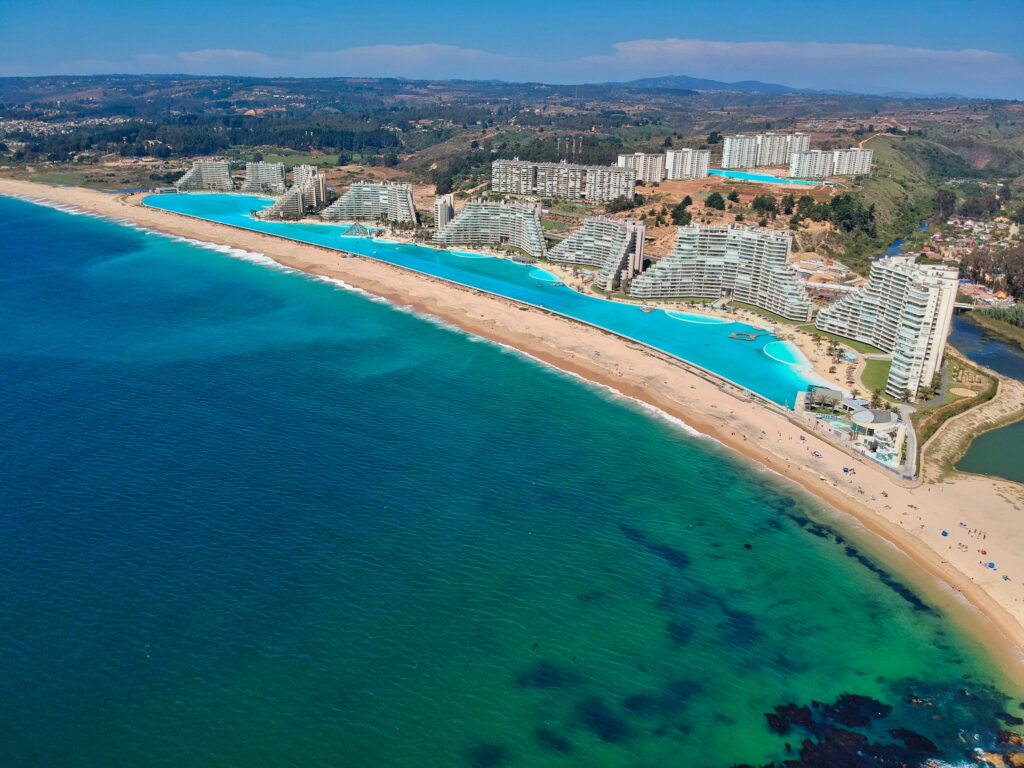
In Algarrobo, on Chile's Pacific coast, the San Alfonso del Mar development is home to an immense artificial lagoon with crystal-clear waters, one of the most beautiful swimming pools in the world . With a surface area of 7.7 hectares and a length of 1 kilometer, holidaymakers can enjoy a variety of water sports such as windsurfing and canoeing, sheltered from the waves, cold and currents of the Pacific Ocean. All this with the comfort of 23-degree water, thanks to Crystal Lagoons' technology that keeps this volume of water perfectly crystal-clear. Click here to book your stay in the adjoining hotel and enjoy the pool!
16. Try an unusual activity: bungee jumping over the Villarrica volcano
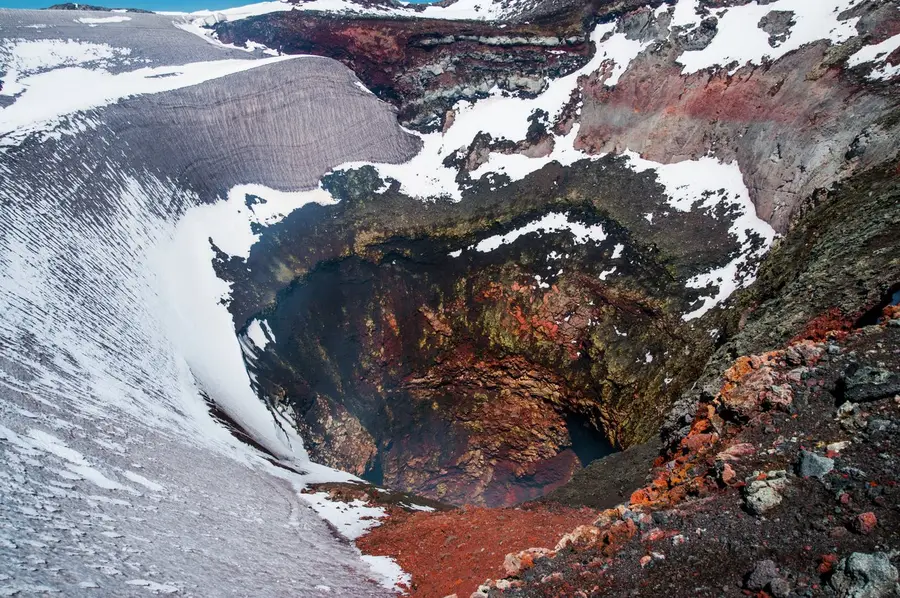
This is one of our top unusual activities around the world. Will you try number 2 in Chile? Bungee jumping is one of those adrenaline-pumping activities. While jumping from a bridge has become a common occurrence around the world, Chile offers a rather novel experience: bungee jumping over the Villarrica volcano, located not far from the city of Pucón. To do this, you board a helicopter and, once you've reached the top of the crater, plunge into it at an altitude of 2,847 m! The special thing is that you cansee the lava and the volcano smokes.
17. Climbing the Paso Internacional Los Libertadores
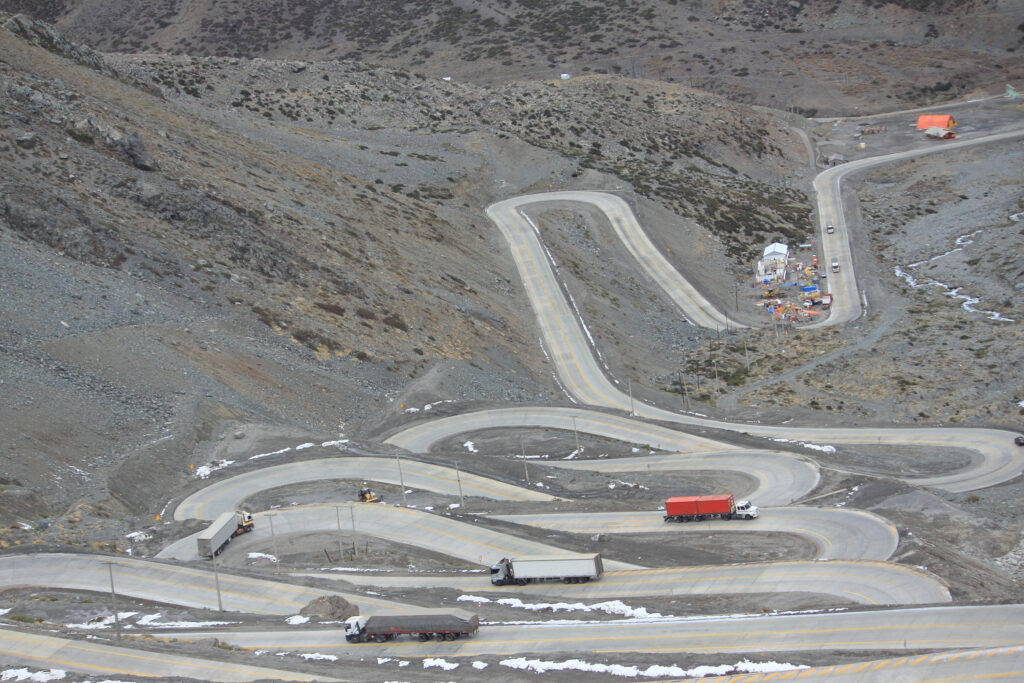
Situated on the main road from Santiago in Chile to Mendoza in Argentina, this passage through the Andes is one of the most legendary climbs you' ll ever make by bike. Its 25 km of twists and turns culminate in a statue of Christ the Redeemer of the Andes watching over the valley, at an altitude of 3,800 m, facing the Aconcagua, South America's highest massif. In winter, the cold, the wind and the various rocks on the road make the climb very complicated.
When is the best time to visit Chile?
Unless you want to venture to the north of the country, where the weather remains mild all year round, it 's best not to visit Chile in winter. Spring and autumn are wonderful seasons: it's not as hot as January, but there are far fewer people! Autumn, with its shimmering colors, is also a beautiful season. Summer runs from the end of December to the end of February, with optimal weather and plenty of sunshine. Click here to find out more!
- If you can, don't miss one of the best events in Latin America,the San Antonio de Areco traditional festival, which will introduce you to a part of Argentine history in a festive atmosphere. It takes place every year on November 10.
- If you're planning a trip to Chile in winter and dreaming of an original New Year's Eve, we recommend Valparaíso. The party goes on all night long, especially with the magnificent and mythical traditional fireworks display on December 31 , one of the biggest pyrotechnic spectacles in South America.
What to do in Chile in two weeks?
Chile is a diverse country with a variety of landscapes, cultures and activities to offer. Here's a suggested itinerary for two weeks in Chile, focusing on some of the country's highlights:
Days 1-3: Santiago
- Explore the capital, Santiago, visiting the historic district, La Moneda (the presidential palace), and the central market.
- Climb Santa Lucía Hill for a panoramic view of the city.
- Sample Chilean cuisine in local restaurants.
Days 4-5: Valparaiso and Viña del Mar
- Take a bus or tour to Valparaiso, a colorful port city.
- Explore the narrow streets, staircases and many murals.
- Spend a day in nearby Viña del Mar, a seaside resort.
Days 6-7: Wine and food in the Casablanca Valley
- Head for the Casablanca Valley, renowned for its vineyards.
- Visit wineries and taste local wines.
- Enjoy local cuisine in the region's restaurants.
Days 8-9: Easter Island (Rapa Nui)
- Fly to Easter Island to explore the mysterious moai and enjoy the beaches.
- Visit the volcano Rano Kau and the village of Orongo.
- Attend a traditional dance performance.
Days 10-12: Patagonia
- Travel to the Patagonia region, exploring Torres del Paine National Park.
- Hike to the famous Torres del Paine.
- Explore the region's glaciers, lakes and unique wildlife.
Days 13-14: San Pedro de Atacama
- Drive to San Pedro de Atacama, in northern Chile.
- Explore the Atacama Desert, the driest in the world.
- Visit the Valley of the Moon, the Tatio geysers and the salt lagoons.
Keep in mind that travel times may vary, so be sure to plan accordingly. This itinerary offers a variety of experiences, from urban culture to wilderness, vineyards and beaches. You can adjust according to your personal interests and the time available.
What to do in Chile in three weeks?
With an extra week, you have the opportunity to explore more of certain regions or add additional destinations. Here's a three-week itinerary extension:
Days 15-17: Chiloé
- Fly to Chiloé, an island in southern Chile renowned for its UNESCO World Heritage-listed wooden churches.
- Explore local markets, fishing villages and the surrounding countryside.
Days 18-20: Puerto Varas and the lakes
- Travel to the lakes region and stay in Puerto Varas.
- Explore the picturesque lakes, including Lake Llanquihue.
- Admire the surrounding volcanoes, such as Osorno.
- Enjoy water sports and local cuisine.
Days 21-22: Viña del Mar and Valparaiso (extension)
- Return to Viña del Mar and Valparaiso for further relaxation on the central coast.
This extended itinerary allows you to explore more of Chile's diversity, adding unique experiences like Chiloé and the Lake District. Be sure to check weather conditions and transportation options to optimize your planning.
What to do in Chile in July or August?
July and August correspond to winter in the southern hemisphere, including Chile. But that doesn't mean there's nothing to do. On the contrary, it's a great time for specific activities. Here are a few suggestions for making the most of your stay in Chile during July and August:
1. Winter sports in the Andes:
- The ski season is at its peak in Chile's Andes ski resorts, notably Valle Nevado, La Parva and El Colorado.
- Enjoy downhill skiing or snowboarding in spectacular scenery.
2. Whale watching:
- On Chile's southern coast, especially in the Patagonia and Aysén regions, you can take part in whale-watching excursions.
- Humpback and blue whales are often seen during these months.
3. Hiking in the Atacama Desert:
- Although temperatures are cool at night, the days can be pleasant for exploring the Atacama Desert.
- Take excursions to the Valley of the Moon, the Tatio geysers and other local attractions.
Almost convinced? Check out our dedicated article "Good reasons to go to Chile"!
Tempted by a vacation in Chile? Take advantage of a discount by booking your travel insurance here, and leave with peace of mind!


